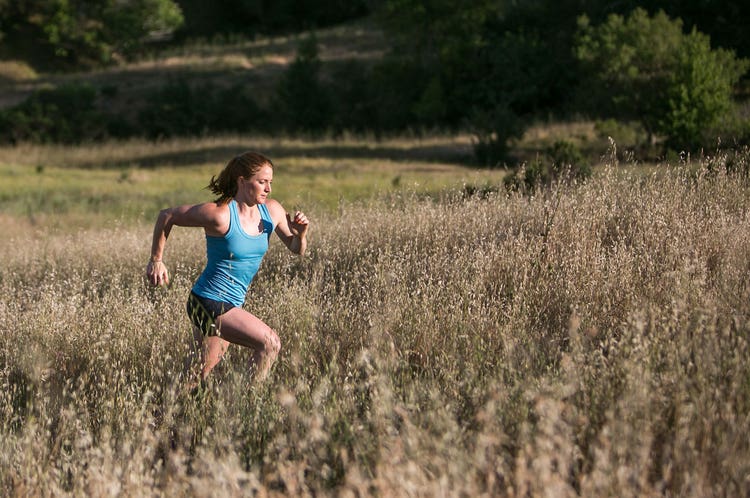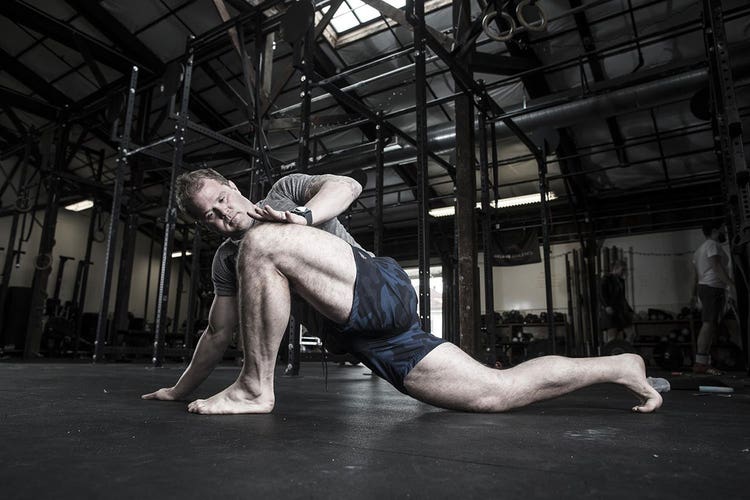A Strategic Approach to Mobility

Rules to live by for a long and happy running habit.
When it comes to performing maintenance, there is no one-size-fits-all program for runners. The aches and pains that can interfere with running well can be created by myriad forces, from an inability to get into good positions to specific tissue problems like an inflamed heel. What you need is a system that you can use to attack your particular issues—a system that prioritizes fixing the underlying problems and also addresses the nagging symptoms.
Even better, this systematized approach should be a concrete, everyday discipline (like brushing and flossing your teeth) so that you can prevent problems altogether, well before pain and injuries surface.
There are no days off when it comes to maintenance. Even on the busiest of days, you can commit to finding 10 minutes for mobility work.

Mobility work: guiding principles
- At least 10 minutes a day. I advise my athletes to strive for 10 to 15 minutes or more per day of mobility and positional optimization work, but I also know that a typical day in the modern world can run amok. So what I’m asking of you is a commitment to at least 10 minutes a day, every day. You can make incredible progress toward achieving improved mechanics and tissue quality with a mere 10 minutes per day. It’s only 10 minutes, but it needs to be 10 minutes charged with purpose. Pick a target area for the day, whether your feet, your hamstrings or your glutes, and concentrate on that area with mobility work.
- Two minutes or more. Spend at least two minutes of dedicated work on each mobilization. Two minutes is the minimum amount of time you need to effect real change in your tissue. If your mobilization of the day is the couch stretch, for example, then perform the couch stretch for two minutes on the right side and then two minutes on the left side. You’ll notice a change. Just two minutes does wonders.
But it has to be a focused two minutes. If you see people at the gym haphazardly lazing back onto foam rollers while they read emails on their phones, they are not mobilizing. You’re much better off spending two targeted minutes working intently with a specific mobilization than rolling around without focus for 20 minutes. To make your daily mobility time count, pick one or two mobilizations and go in with total purpose. To effect real change, you need to work smartly and deeply, searching for knots and particularly tight areas. Two minutes for each mobilization can be very effective, but you must work with focus and concentration.
- Work upstream and downstream. To make real improvements on your goals, work upstream and downstream of the problem. In other words, if a certain area, joint or muscle, whether your ankle, knee, hamstring, hip or lower back, is injured or is preventing you from moving freely, you have to develop some slack around the problem. Sure, you want to work directly on the hot spot or restricted area, but you also want to work above and below the problem.
Why? Because it helps you create slack around the joint or tissue hot spot. If you have terrible ankle range of motion, for example, then dedicate some of your mobility time to working below the problem area (your arches, your toes and the tops of your feet) and above the problem area (your calf muscles, your knees, and even your upper legs and hips).
- If it feels sketchy, it is sketchy. If you’re mobilizing and really pushing it, you may get a pain signal that is less about the stress being placed on the muscle, joint and connective tissue and more potentially doing your body harm. So here’s the rule: If it feels sketchy, it is sketchy. Back off and go about the mobilization in a different way. For example, behind the knee is a neuromuscular bundle that you might contact while you’re doing leg-flexion work, using a lacrosse ball like you might use a nutcracker. Spots like these sometimes send up spots of weird, nervy pain. This is the time to back off. While you want to push deep and peel back layers of discomfort with your mobility work, if the signal coming from your body says, “This is wrong,” then it is wrong.
We always advocate for being able to breathe all the way in and all the way out while mobilizing. If you can’t breathe, you are working too deeply. If you can’t breathe in a position of mobilization, you don’t own that position or mobilization.
- Be creative. The mobilizations in the 10-day transformation program are starting points. Don’t be limited to the mobilizations. Try different tools and techniques to sort things out. Have fun with it, and always work with intent. Let your intuition lead you into new techniques and combinations of techniques.
Photo credit: Darren Miller Photography (hero); John Segesta (inset)
.